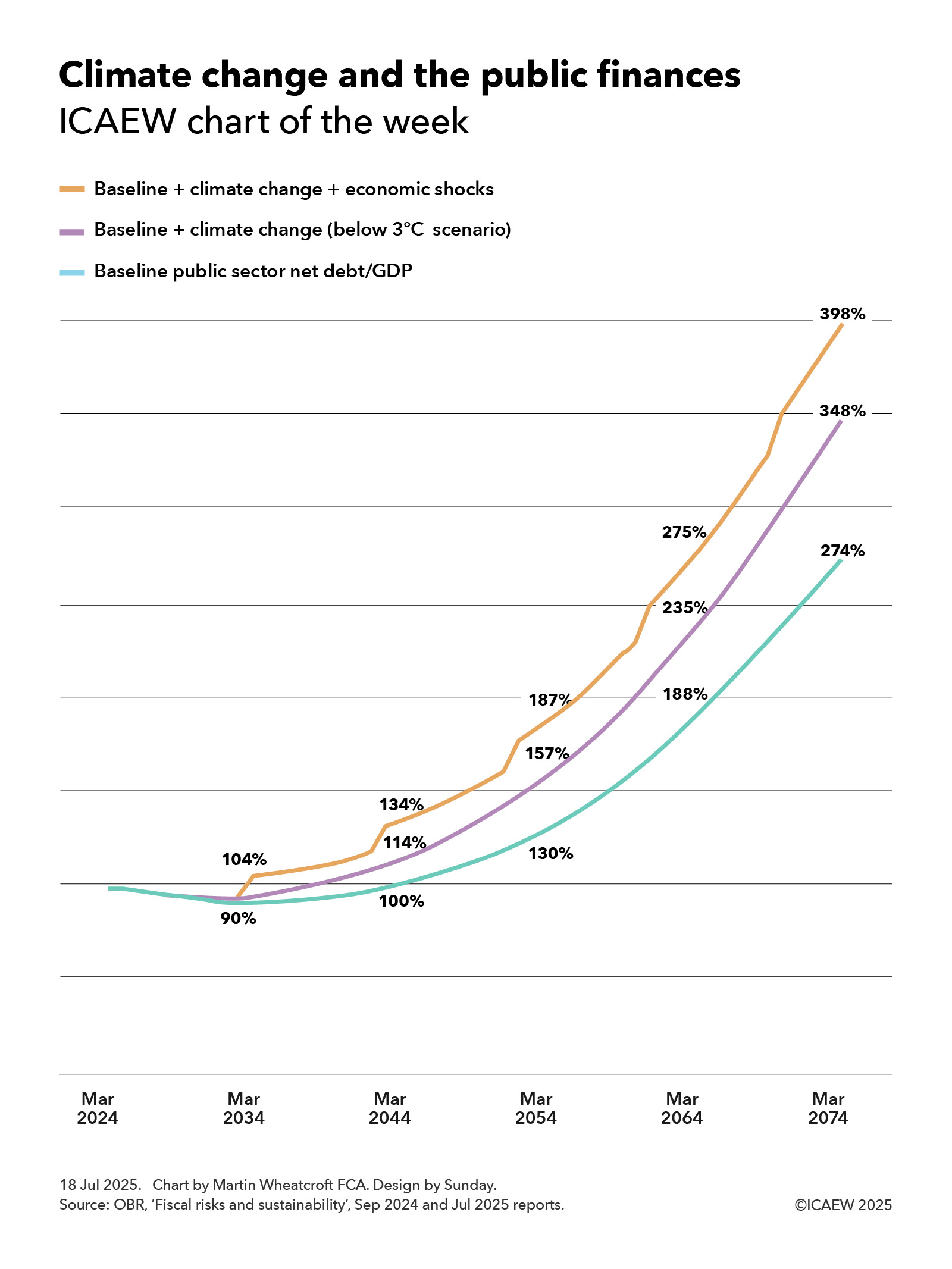S.Korea poised to fall behind Taiwan in GDP per capita in 2025 for 1st time in 22 yearss – KED Global

Economic Outlook and Sustainable Development Goals: A Comparative Analysis of South Korea and Taiwan
Executive Summary: Economic Projections and SDG 8 Implications
A 2025 forecast indicates that Taiwan’s Gross Domestic Product (GDP) per capita is set to surpass that of South Korea for the first time since 2003. This economic shift highlights differing national trajectories in achieving Sustainable Development Goal 8 (Decent Work and Economic Growth). Taiwan’s accelerated growth, driven by a robust high-tech export sector, contrasts with South Korea’s moderated economic outlook, which is impacted by external pressures such as US tariff hikes.
- 2025 GDP Per Capita Forecast:
- Taiwan: $38,066
- South Korea: $37,430
- 2026 GDP Per Capita Forecast:
- Taiwan: $41,019
- South Korea: $38,947
Analysis of Key Economic Indicators and Progress Towards SDG 9
The diverging economic performance is rooted in industrial strategy and innovation, directly impacting progress on Sustainable Development Goal 9 (Industry, Innovation, and Infrastructure). Taiwan’s leadership in the semiconductor industry is a primary driver of its economic outperformance.
Comparative Performance Metrics
- Export Growth: In August, Taiwan’s monthly exports overtook South Korea’s for the first time. Taiwan recorded a 34.1% year-on-year increase to $58.5 billion, while South Korea saw a 1.3% rise to $58.4 billion. This underscores Taiwan’s strengthening position in global supply chains, a key component of SDG 9.
- GDP Growth Rates: Taiwan’s real GDP expanded by 8.01% on-year in the second quarter, with its 2025 forecast revised upwards to 4.45%. In contrast, South Korea’s real GDP grew by 0.6% in the same period, and its 2025 growth forecast was revised down to 0.9%.
- Narrowing GDP Per Capita Gap: The gap between the two economies has rapidly decreased from nearly $10,000 in 2018. In 2023, South Korea’s GDP per capita was $35,129, with Taiwan closely following at $33,437.
Factors Influencing Economic Trajectories and Industrial Competitiveness
Several factors contribute to the projected economic shift, presenting both opportunities and challenges for sustainable industrialization and economic growth as outlined in the SDGs.
- Currency Performance: The relative weakness of the Korean won compared to the Taiwan dollar has increased the cost of imported raw materials for South Korea, eroding the price competitiveness of its exports and hindering progress toward stable economic growth (SDG 8).
- Innovation and Supply Chain Dominance: Taiwanese technology firms, particularly TSMC, have secured a central role in the global AI supply chain. This strategic positioning exemplifies the successful application of innovation to drive industrial and economic growth, aligning with the targets of SDG 9.
- Long-Term Growth Potential: Economists estimate South Korea’s long-term economic growth potential to be below 2%, while Taiwan’s is projected to exceed 3%. This disparity signals different capacities for sustained investment in the infrastructure and innovation required for long-term sustainable development.
Analysis of Sustainable Development Goals in the Article
-
Which SDGs are addressed or connected to the issues highlighted in the article?
The article primarily addresses issues related to the following Sustainable Development Goals:
-
SDG 8: Decent Work and Economic Growth
The entire article is a comparative analysis of the economic performance of South Korea and Taiwan. It focuses on key metrics of economic growth, such as Gross Domestic Product (GDP) per capita, real GDP growth rates, and economic forecasts. The central theme is the competition between the two economies and their prospects for sustained economic growth, which is the core of SDG 8.
-
SDG 9: Industry, Innovation, and Infrastructure
The article explicitly attributes the shifting economic fortunes to the performance of specific industries. It highlights that Taiwan’s accelerated growth is driven by “exports in semiconductors and electronic goods.” It also mentions the central role of “Taiwanese technology companies, led by contract chipmaker TSMC, in the global AI supply chain.” This directly relates to SDG 9’s emphasis on promoting sustainable industrialization, fostering innovation, and enhancing the role of the technology sector in economic development.
-
-
What specific targets under those SDGs can be identified based on the article’s content?
Based on the article’s focus, the following specific targets can be identified:
-
Target 8.1: Sustain per capita economic growth
This target aims to “sustain per capita economic growth in accordance with national circumstances.” The article is fundamentally about this target, as it compares the projected GDP per capita of both nations. It states, “In 2025, South Korea’s GDP per capita is forecast at $37,430, short of Taiwan’s projection of $38,066.” The entire discussion revolves around the rates of growth and the narrowing and potential reversal of the gap in per capita economic output between the two countries.
-
Target 9.2: Promote inclusive and sustainable industrialization
This target seeks to “promote inclusive and sustainable industrialization and, by 2030, significantly raise industry’s share of… gross domestic product.” The article underscores the importance of the industrial sector, particularly high-tech manufacturing, as the engine of economic growth and exports for both economies. The competition described is a direct result of the performance of their respective industrial bases, with Taiwan’s success being linked to its dominance in semiconductors and electronics exports.
-
-
Are there any indicators mentioned or implied in the article that can be used to measure progress towards the identified targets?
Yes, the article provides several explicit and implied indicators to measure progress:
-
Indicator for Target 8.1: Annual growth rate of real GDP per capita (Indicator 8.1.1)
The article is rich with data that directly corresponds to this indicator. It provides specific figures for GDP per capita forecasts (“Taiwan’s statistics agency forecast that its GDP per capita will hit $41,019 in 2026… By comparison, South Korea’s GDP per capita is expected to hover around $38,947 in 2026”). It also provides real GDP growth rates: “Taiwan’s real GDP expanded 8.01% on-year in the second quarter… By contrast, South Korea’s real GDP grew by a meager 0.6% on-year in the second quarter.” These figures are direct measures for Indicator 8.1.1.
-
Implied Indicator for Target 9.2: Export value and growth of manufactured goods
While not a formal SDG indicator, the article uses export performance as a primary proxy for the health and competitiveness of the industrial sector. It provides concrete data to measure this, stating, “Taiwan’s monthly exports overtook South Korea’s overseas shipments for the first time last month. Its exports in August rose 34.1% from a year earlier to a record $58.5 billion, while South Korea managed a modest 1.3% on-year rise to $58.4 billion.” This data on the value and growth of overseas shipments of goods (primarily electronics and semiconductors) serves as a clear, article-specific indicator of industrial performance and its contribution to the economy.
-
-
Table of SDGs, Targets, and Indicators
SDGs Targets Indicators SDG 8: Decent Work and Economic Growth Target 8.1: Sustain per capita economic growth in accordance with national circumstances. Indicator 8.1.1: Annual growth rate of real GDP per capita. (Explicitly mentioned through forecasts like “$37,430” for South Korea and “$38,066” for Taiwan in 2025, and real GDP growth rates of 0.6% and 8.01% respectively). SDG 9: Industry, Innovation, and Infrastructure Target 9.2: Promote inclusive and sustainable industrialization and significantly raise industry’s share of gross domestic product. Implied Indicator: Monthly/Annual export value and growth rate of manufactured goods. (Mentioned in the article as Taiwan’s exports reaching “$58.5 billion” versus South Korea’s “$58.4 billion” in a month, reflecting industrial output and competitiveness).
Source: kedglobal.com

What is Your Reaction?
 Like
0
Like
0
 Dislike
0
Dislike
0
 Love
0
Love
0
 Funny
0
Funny
0
 Angry
0
Angry
0
 Sad
0
Sad
0
 Wow
0
Wow
0



















































.jpg.webp?itok=0ZsAnae9#)
























